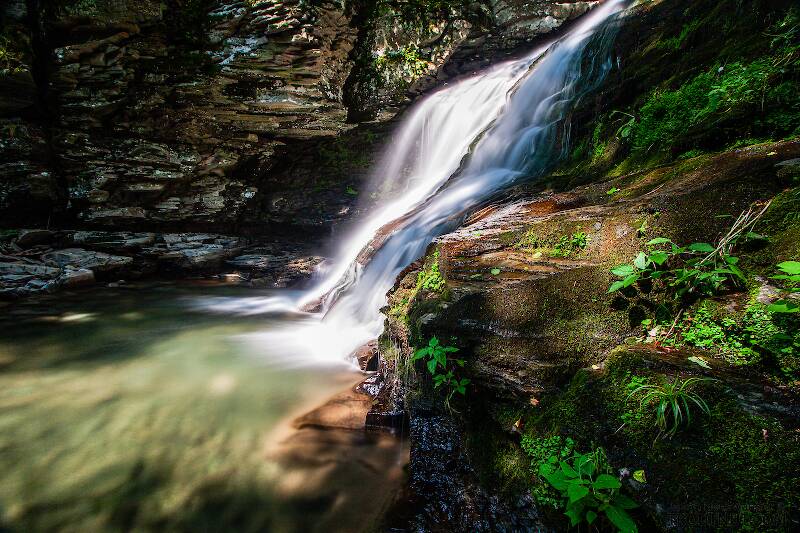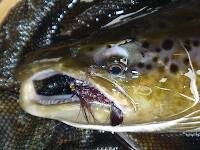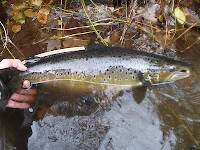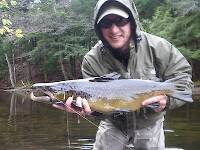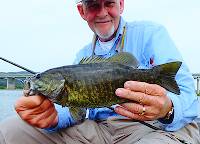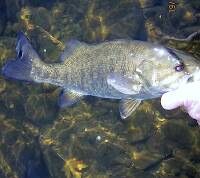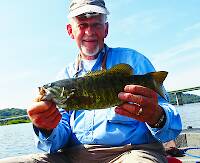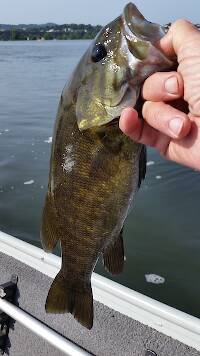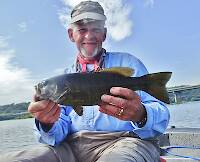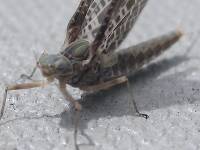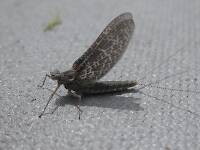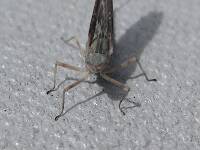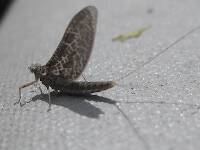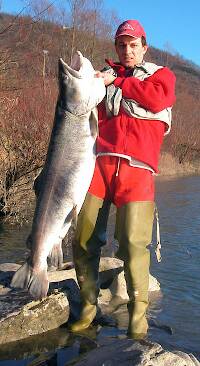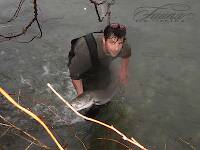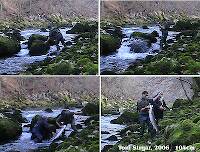
Salmonflies
Pteronarcys californica
The giant Salmonflies of the Western mountains are legendary for their proclivity to elicit consistent dry-fly action and ferocious strikes.
Featured on the forum

Some characteristics from the microscope images for the tentative species id: The postero-lateral projections are found only on segment 9, not segment 8. Based on the key in Jacobus et al. (2014), it appears to key to Neoleptophlebia adoptiva or Neoleptophlebia heteronea, same as this specimen with pretty different abdominal markings. However, distinguishing between those calls for comparing the lengths of the second and third segment of the labial palp, and this one (like the other one) only seems to have two segments. So I'm stuck on them both. It's likely that the fact that they're immature nymphs stymies identification in some important way.

Troutnut is a project started in 2003 by salmonid ecologist Jason "Troutnut" Neuswanger to help anglers and
fly tyers unabashedly embrace the entomological side of the sport. Learn more about Troutnut or
support the project for an enhanced experience here.
TheMidge on Apr 25, 2007April 25th, 2007, 5:53 am EDT
Hi all, I'm new to the board, and am interested in everyone's opinion on something. Does everyone believe that typical trout tactic's work on Land Lock's? I've heard some people say that They act and feed just like trout, and others say that you will only catch them on streamers. I have my own opinion, but am wondering what everyone else thinks.
Thanks, Dave
Thanks, Dave
Earlfishman
Posts: 17
Posts: 17
Earlfishman on Apr 25, 2007April 25th, 2007, 6:40 am EDT
Dave,
As with most things, I'd have to say that it all depends. What landlocks are you referring to and what time of year are you fishing for them?
I've never caught Atlantics on anything other than streamers and then only at certain times of year when they were following baitfish into streams.
In the western U.S. I've caught lots of Kokanee--landlocked sockeye--using more traditional trout tactics but only on nymphs and not on dry flies and only in streams when they were beginning their spawning runs.
I suspect it has more to do with the feeding preferences of the ancestral stock--fish eating vs. plankton feeding, etc.--than anything else. I've never tried to catch either when they were in the open water of a lake, but I suppose that they might well eat flies. It's just that in my experience they tend to hold a little deep for fly fishing to be much fun.
Earl
As with most things, I'd have to say that it all depends. What landlocks are you referring to and what time of year are you fishing for them?
I've never caught Atlantics on anything other than streamers and then only at certain times of year when they were following baitfish into streams.
In the western U.S. I've caught lots of Kokanee--landlocked sockeye--using more traditional trout tactics but only on nymphs and not on dry flies and only in streams when they were beginning their spawning runs.
I suspect it has more to do with the feeding preferences of the ancestral stock--fish eating vs. plankton feeding, etc.--than anything else. I've never tried to catch either when they were in the open water of a lake, but I suppose that they might well eat flies. It's just that in my experience they tend to hold a little deep for fly fishing to be much fun.
Earl
GONZO on Apr 25, 2007April 25th, 2007, 9:34 am EDT
Dave,
Earl's "it all depends" answer is about all that can be said without knowing more about the landlocks (Atlantics, I assume) you're trying to catch. However, just about any type of fly that catches trout can catch landlocks in certain situations.
Stream resident landlocks can be very troutlike--feeding on mayfly and caddisfly hatches and responding well to nymphs, wets, and drys. Even in lakes, strong Hex or brown drake hatches or some of the lake caddisflies can bring them eagerly to the surface. The landlocks of the Finger Lakes can often be caught with nymphs and dries during such hatches, and I'm sure a similar situation exists in many other Northeastern lakes.
Of course, streamers are classic landlock fare. Whenever landlocks forage on baitfish like smelt or alewives, and especially when they are following the spawning runs of such baitfish, streamers are the obvious choice. Streamers are often preferred by many who pursue landlocks during their fall spawning runs, although nymphs and egg patterns also work very well at times.
Finally, with regard to their "troutiness"--the word "trout" is a quirky term, and it could be argued that landlocks have a better claim to it than any "trout" (rainbows, cutthroats, brookies, etc.) we pursue in the states except the brown.
Earl's "it all depends" answer is about all that can be said without knowing more about the landlocks (Atlantics, I assume) you're trying to catch. However, just about any type of fly that catches trout can catch landlocks in certain situations.
Stream resident landlocks can be very troutlike--feeding on mayfly and caddisfly hatches and responding well to nymphs, wets, and drys. Even in lakes, strong Hex or brown drake hatches or some of the lake caddisflies can bring them eagerly to the surface. The landlocks of the Finger Lakes can often be caught with nymphs and dries during such hatches, and I'm sure a similar situation exists in many other Northeastern lakes.
Of course, streamers are classic landlock fare. Whenever landlocks forage on baitfish like smelt or alewives, and especially when they are following the spawning runs of such baitfish, streamers are the obvious choice. Streamers are often preferred by many who pursue landlocks during their fall spawning runs, although nymphs and egg patterns also work very well at times.
Finally, with regard to their "troutiness"--the word "trout" is a quirky term, and it could be argued that landlocks have a better claim to it than any "trout" (rainbows, cutthroats, brookies, etc.) we pursue in the states except the brown.
TheMidge on Apr 25, 2007April 25th, 2007, 9:38 am EDT
Thanks, guys. I'm referring mainly to the atlantic version that live in the rivers and lakes in Northern Maine
GONZO on Apr 25, 2007April 25th, 2007, 10:06 am EDT
Rainbow smelt are classic forage fish in many Maine lakes, and the streamer patterns that imitate them are legion. Many Maine lakes also have good Hex hatches. Resident stream fish should respond to imitations of seasonal hatches, as well as baitfish patterns. And, of course, there's always that classic New England standby--the Hornberg. :)
Quick Reply
Related Discussions
Topic
Replies
Last Reply
1
Nov 3, 2015
by TimCat
by TimCat

